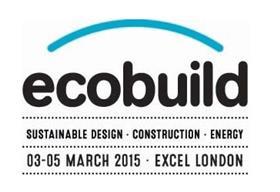Are developers and the wider construciton industry finally recognising the social value of ‘green infrastructure’?

The concept of “green infrastructure” is gathering momentum among real estate professionals. Established in the last century, green infrastructure has only relatively recently become a key consideration in urban planning, sustainable development, resilient cities, and real estate investment.
So what does it actually mean?
Put simply, it refers to the parks, gardens, trees, living roofs, green walls, farms, wetlands, and other natural spaces that make up the environmental component of our cities today. Assets and services that fulfil necessary functions for people and the environment, ranging from the physical to the psychological.
Take London. One of the most startling statistics I came across recently was that nearly half (47%) of London is in fact green space. Surely, a defining characteristic of our capital? Yet within six years, it’s predicted there will be 9 million people living in the captital, and 10 million within 16 years. Our country’s rapid central urbanisation, a trend mirrored around the world, means that the greenery that we cherish is under increasing pressure. And the need to incorporate natural spaces into urban designs has therefore never been more urgent.
One of the most startling statistics I came across recently was that nearly half (47%) of London is in fact green space
Responding to this challenge, many of our leading developers are now placing significant emphasis on preserving and promoting greener spaces within their schemes. Last week, I was fortunate enough to spend the morning at Elephant & Castle with Lend Lease, and to hear first-hand how environmental thinking has permeated every aspect of master-planning for this complex inner city scheme. It was striking to understand how integral People-Planet-Profit commitments are to the project.
Jon Kirkpatrick, head of sustainability, Lend Lease told me: “Virtually all our design ideas to mitigate adverse environmental impact are channelled into societal benefits in one form or another. This is down to a corporate philosophy that people come first, and we need to design the space around how they will use and interact with it. This in turn will automatically increase marketability of our homes, and improve our license to operate in the long-term.”
Indeed, green space itself, and the ecological quality of that green space, is a fundamental design principle running through Lend Lease’s current proposals. On the face of it, the prospect of a large developer taking down a number of the 400 or so mature plane trees on the site to accommodate their proposals for over 3,000 new homes, might seem depressing. But every tree that is felled on the new site will be replaced, and for every mature tree that is felled, at least four will be planted off site in the surrounding neighbourhood.
The developer’s vision is to create a network of green corridors that link the new wildlife on Elephant Park to nearby neighbourhoods and open spaces. Not only will hundreds of new trees be planted in and around the completed scheme, but by increasing the variety of plants and trees species within the development site, and supplementing them with green roofs, green walls, and swales, the space will also have a far higher biodiversity value.
The masterplan itself has been substantially influenced by the need to preserve some of the oldest trees on site. Angles have been adjusted on certain buildings, orientation has been altered, and squares have been located to bring these precious green assets into the heart of the resident experience.
And through interaction with this green infrastructure Lend Lease also hopes to bring residents together. Each Lend Lease plot will include an innovative Grow Garden scheme – a residents’ gardening club providing individual access to a patch of earth to grow plants, flowers, and vegetables, at both street and roof level…
And Lend Lease’s plans for the construction phase itself have not been spared either. “Mobile Gardeners” (www.mobilegardeners.org/) have been given access to specific plots that will be free from construction for lengthy periods of time. These provide a hub for old and new residents to come together and grow plants in tubs as part of a community network.
The rationale for all these measures is that they enhance the resident and visitor experience, improving the quality of people’s lives. Green spaces provide a place for individuals to learn, play, grow, exercise, and reflect. Benefitting heart, body, and soul, they help community cohesion, health, wellbeing and ultimately, sales.
Such initiatives are still rare in our cities, but faced with rising fuel and food prices, resource scarcity, and climate change, bringing plant and food production closer to home is definitely on the rise. More limited urban farming and gardening initiatives have taken off in recent years, like recent award-winners Grow Up (growup.org.uk), Cultivate London (http://cultivatelondon.org), and Farm London (http://farmlondon.weebly.com).
So have we finally reached a time when green spaces and human interaction with nature – biophilia – are genuinely recognised for their intrinsic social value? With a new report coming out soon by the UK Green Building Council on “Demistifying Green Infrastructure”, and a campaign under way for London to be recognised as a National Park (see http://www.greaterlondonnationalpark.org.uk), the true value of natural spaces may finally have become a significant line item on the urban balance sheet.

Julie Hirigoyen is UK head of sustainability JLL and incoming chief executive UK Green Building Council. She will be speaking in the Ecobuild session “Visions of the future: Five big ideas”, Thursday 5 March, 15.00 - 16.00



























No comments yet